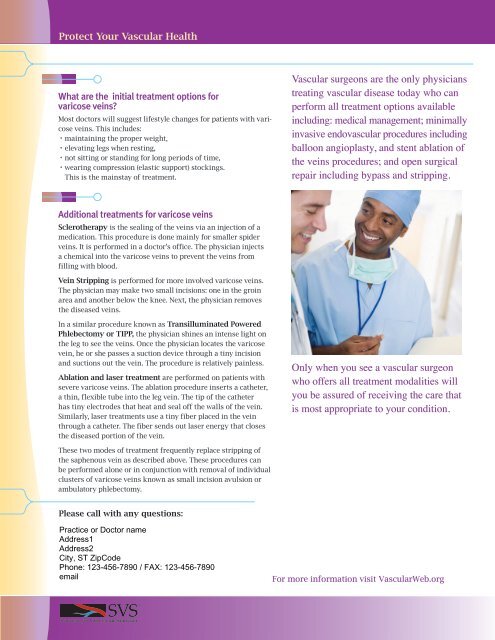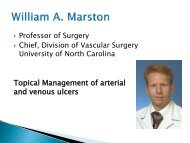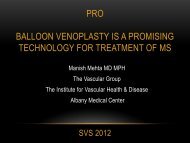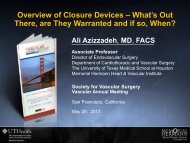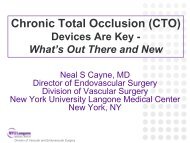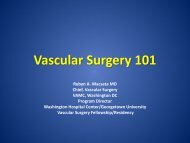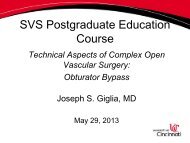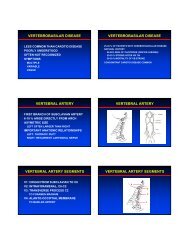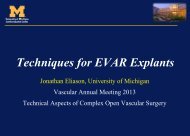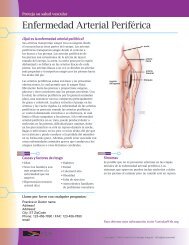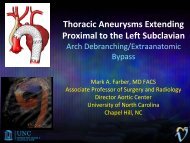Varicose Veins - VascularWeb
Varicose Veins - VascularWeb
Varicose Veins - VascularWeb
Create successful ePaper yourself
Turn your PDF publications into a flip-book with our unique Google optimized e-Paper software.
Protect Your Vascular Health<br />
What are the initial treatment options for<br />
varicose veins<br />
Most doctors will suggest lifestyle changes for patients with varicose<br />
veins. This includes:<br />
• maintaining the proper weight,<br />
• elevating legs when resting,<br />
• not sitting or standing for long periods of time,<br />
• wearing compression (elastic support) stockings.<br />
This is the mainstay of treatment.<br />
Vascular surgeons are the only physicians<br />
treating vascular disease today who can<br />
perform all treatment options available<br />
including: medical management; minimally<br />
invasive endovascular procedures including<br />
balloon angioplasty, and stent ablation of<br />
the veins procedures; and open surgical<br />
repair including bypass and stripping.<br />
Additional treatments for varicose veins<br />
Sclerotherapy is the sealing of the veins via an injection of a<br />
medication. This procedure is done mainly for smaller spider<br />
veins. It is performed in a doctor’s office. The physician injects<br />
a chemical into the varicose veins to prevent the veins from<br />
filling with blood.<br />
Vein Stripping is performed for more involved varicose veins.<br />
The physician may make two small incisions: one in the groin<br />
area and another below the knee. Next, the physician removes<br />
the diseased veins.<br />
In a similar procedure known as Transilluminated Powered<br />
Phlebectomy or TIPP, the physician shines an intense light on<br />
the leg to see the veins. Once the physician locates the varicose<br />
vein, he or she passes a suction device through a tiny incision<br />
and suctions out the vein. The procedure is relatively painless.<br />
Ablation and laser treatment are performed on patients with<br />
severe varicose veins. The ablation procedure inserts a catheter,<br />
a thin, flexible tube into the leg vein. The tip of the catheter<br />
has tiny electrodes that heat and seal off the walls of the vein.<br />
Similarly, laser treatments use a tiny fiber placed in the vein<br />
through a catheter. The fiber sends out laser energy that closes<br />
the diseased portion of the vein.<br />
Only when you see a vascular surgeon<br />
who offers all treatment modalities will<br />
you be assured of receiving the care that<br />
is most appropriate to your condition.<br />
These two modes of treatment frequently replace stripping of<br />
the saphenous vein as described above. These procedures can<br />
be performed alone or in conjunction with removal of individual<br />
clusters of varicose veins known as small incision avulsion or<br />
ambulatory phlebectomy.<br />
Please call with any questions:<br />
For more information visit <strong>VascularWeb</strong>.org<br />
®


